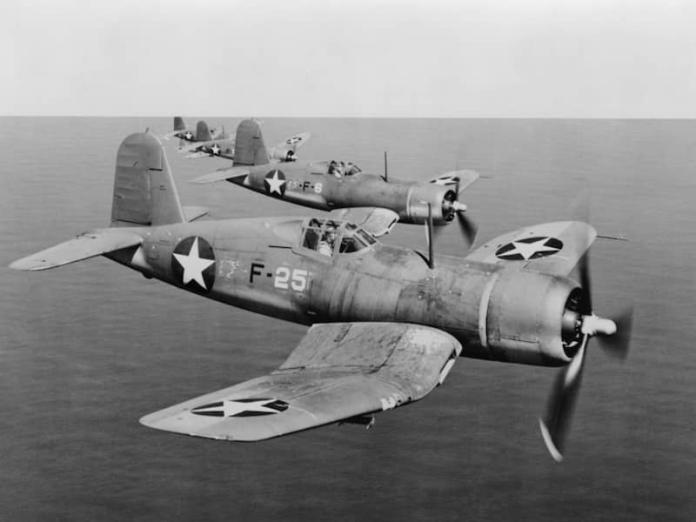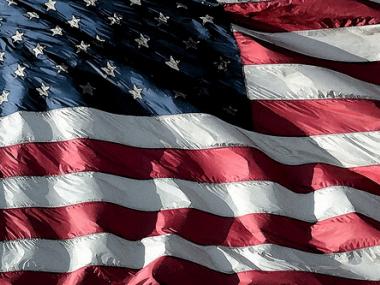10 New Words from World War II
WWII was a rich source of new words for the English language. Before the 1940s, you couldn’t tell an eager beaver to shut his pie hole while you were being debriefed by the head honcho.

A few months ago, I participated in a game-show fundraiser for The Noah Webster House with a bunch of other language people, and Peter Sokolowski from Merriam-Webster made an off-hand comment about World War II being a rich source of new words, which made me curious about which words, so I thought since today is Veterans Day in the United States, it would be a good time to satisfy that curiosity.
“How might you go about finding such words?” you might wonder. Well, the online version of the Oxford English Dictionary has some fabulous search filters, and the most interesting way I was able to search for WWII words was to search for entries that include the word “slang” in their etymology and show the first time the word was used as being in the early 1940s.
1. Cakehole
You may remember that a few episodes ago, when we were talking about the word “schnozz” being a word for your nose, I mentioned that “piehole” is a word for your mouth. Well, my 1940s slang search turned up a similar, earlier word—“cakehole”—that also describes your mouth, and it started out as military slang. You can tell because the first citation is from a 1943 book called “Service Slang” and reads, “Cake hole, the airman’s name for his or anyone else’s mouth.”
“Piehole” is much newer; it didn’t show up until 1983, but I’d be willing to bet it was modeled on “cakehole,” so we can ultimately thank those 1940s airmen for both. I guess back then cake was just more popular than pie.
The term made me wonder if troops got cake in their rations. It seemed unlikely since I can’t imagine cake traveling well, and as far as I can tell, at least for troops from the US and UK, they didn’t get cake. The treats they got in their rations were typically candy. I guess they were just fantasizing about cake.
And that line of reasoning led me to investigate Twinkies because of their famed long shelf life. Could they have been stable enough to travel with the troops? I mean, they’re kind of cake.
Twinkies did exist by World War II. They were invented in 1930, but back then their shelf life was only 26 days. And it turns out that even today with more preservatives, the decades-long shelf life is a myth. They will still supposedly only last about 45 days before they go bad.
2. Eager Beaver
You might think I’m an eager beaver doing all that extra research about cake and Twinkies, and if you called me that, you’d also be using WWII slang.
The first use of “eager beaver” seemed to be among aviation cadets in San Antonio, Texas, in 1943. And by 1945, the journal “American Speech” wrote about the phrase, defining an eager beaver as “a soldier who is so anxious to impress his superiors that he volunteers for every job that offers, or otherwise displays unusual diligence.”
The OED notes that the phrase “work like a beaver” to describe working hard goes all the way back to 1741 in the United States, so the idea of a hard-working beaver was old, but the phrase “eager beaver” was new in the 1940s.
3. Snafu
If you aren’t working hard, you could be described as “fouling up,” and that phrase also comes from WWII.
The military acronym “snafu,” meaning “situation normal, all fouled up,” appeared in the early 1940s, and appears to be the source of “fouled up” being used alone soon after to mean someone made a mistake.
And yes, I know the F can also stand for another word, and to F -up is older than to foul up. It seems it was the euphemism that appeared during the war, and the OED has many examples.
In 1942, Time Magazine wrote, “The Army has a laconic term for chronic befuddlement: ‘snafu,’ situation normal; all fouled up.” And then in 1943, “The Saturday Evening Post” included a line that read “Those knuckleheads are all fouled up.”
Later, “snafu” was even used as a verb and an adjective, as in “Eddie had twice this season snafued a batting order” from the Baltimore Sun in 1953, and “My arrangements seemed snafued” from the book “Ultimate Issue” by George Markstein in 1981.
Interestingly, even though “snafu” is an acronym, it’s written in all lowercase letters like a word, much the same way we write “scuba,” and “radar” as words even though they are short for “self-contained underwater breathing apparatus,” and “radio detecting and ranging” respectively.
4. Radar
“Radar” is another word that popped up in the United States military during WWII. The British military at the time referred to the technology as R.D.F., which stood for “radio direction-finding,” but it was the American term that stuck.
5. Acronym
“Scuba,” “radar,” “laser,” “sonar” and “snafu” are all acronyms, words made up by the first letter or letters of other words, but that are pronounced as words themselves. You might think they’re been around forever, but according to Etymonline, acronyms were exceedingly rare before WWII, and the term “acronym” only entered English in 1943, borrowed from the German word “Akronym.”
It’s funny to think there wasn’t a word for them until the WWII era because they’re so prevalent today, especially in the government, military, space program, and so on.
And that “acro-” at the beginning of the word “acronym” is the same “acro-” at the beginning of the word “acrostic,” which is a word with a similar meaning and which is much, much older, going all the way back to the 1500s. An acrostic is something like a poem or puzzle in which the first letter of each word or line spells out its own word, much like an acronym.
6. Knucklehead
“Knucklehead” to describe someone as stupid has been around since the late 1800s according to Etymonline, so it’s not technically slang that originated during WWII, but it was significantly popularized during that time because of the Cadet R.F. Knucklehead “Don’t” posters that were displayed at U.S. Army Air Force training fields throughout the Southwest, aimed at reducing the number of flying accidents, according to a May 1942 edition of “Life Magazine.”
Cadet Knucklehead “does everything cadets are not supposed to do” according to an April 1942 edition of the “U.S. Air Service” magazine. The cartoons, created by artist Jack Zumwalt of Randolph Field, Texas, show pictures such as Cadet Knucklehead gawking at a bird while flying toward a mountain with the advice “Don’t fail to be constantly observant in the air.”
I couldn’t find anything to definitively support this, but I suspect the “R.F.” in Cadet R.F. Knucklehead’s name comes from abbreviating “Randolph Field.”
7. Debrief
Cadet Knucklehead probably spent a lot of time being debriefed after his calamitous missions, and that term, “debrief,” seems to have started in the Royal Air Force in the United Kingdom.
I thought you’d like the first citation in the OED for this one from “John O’London’s Weekly” in 1945 because the very first one—the first written evidence the OED has for the word—seems to be complaining about not liking the word. It reads:
“The R.A.F. use of the atrocity debrief. When airmen receive their orders for an operation they are said to be briefed for it—a quite legitimate extension of the legal term. But when they return to give their report, they do not just report, as one would think. They are debriefed.”
You can hear the annoyance in the writing. An “atrocity”!
8. Honcho
Maybe Mr. John O’London thought he was the head honcho of the English language. And if he did, he’d have been using another WWII word: “honcho.”
This one comes from the Japanese word “hancho,” which means “group leader” or “squad leader,” and it was first used “among American prisoners of war in Japan,” according to the OED. For example, the “Coshocton Tribune” in Ohio had a photo caption in 1945 that read “This prisoner is the ‘honcho,’ or group headman, in the POW stockade.” Today, “head honcho” is a casual way to describe someone in charge, the boss.
9. Jeep
Would the head honcho drive a Jeep today? Maybe, if it were an especially nice Jeep. But I was surprised to learn that the word “Jeep” started as a cartoon character and became WWII military slang before it became a well-known brand name.
The first Jeep was Eugene the Jeep, a character in the Popeye comics who first appeared in 1936. Eugene was a magical creature, sometimes mistaken for a dog, who could only say the word “Jeep.”
The story goes that when the American military developed the vehicle we now think of as a WWII Jeep, they called it a general purpose vehicle and abbreviated it “G.P.” for “general purpose.” Since “G.P.” sounds a lot like “jeep,” the 1941 soldiers associated their new, versatile vehicle with the nimble cartoon character and started calling it a “jeep.” By 1943 a trademark was filed, and by 1945 civilian models were being manufactured in Ohio.
10. Jab
Finally, I’ll end with one word I found that isn’t exactly a WWII term, but I think you’ll still find interesting: “jab” to describe an injection. This came up in my search because its first use as a verb meaning to give an injection was in 1938, but it was a noun describing getting an injection earlier, so that’s why I feel like it doesn’t quite count.
We think of it as a very British word today, and it is used more often in Britain today, but the Oxford English Dictionary says the noun originated as slang in the United States in 1913. So the next time you want to complain about all the American newscasters affecting British English to describe people who got vaccinated as “getting the jab,” stop yourself because we started it!
Image courtesy of Shutterstock.





